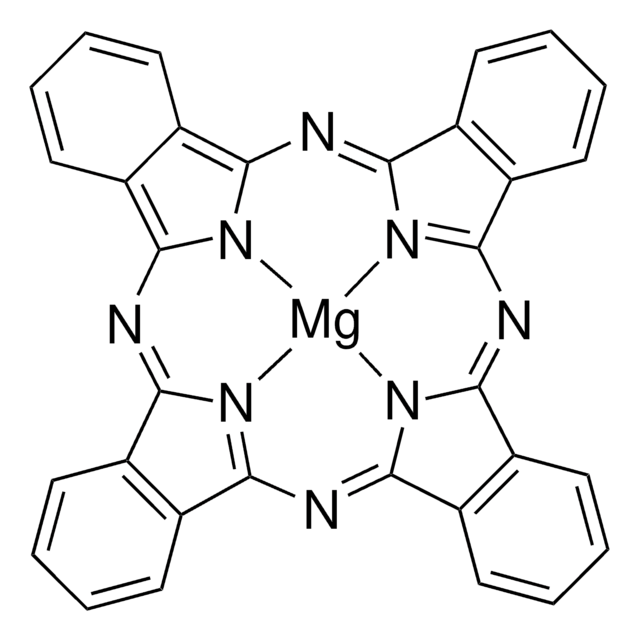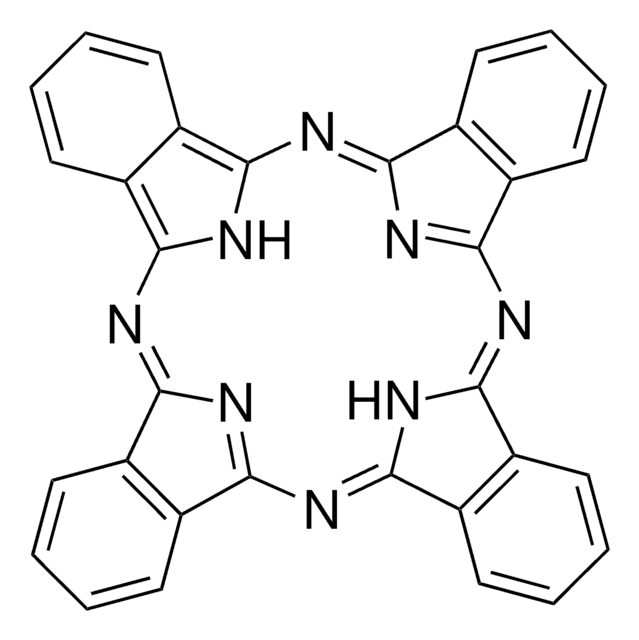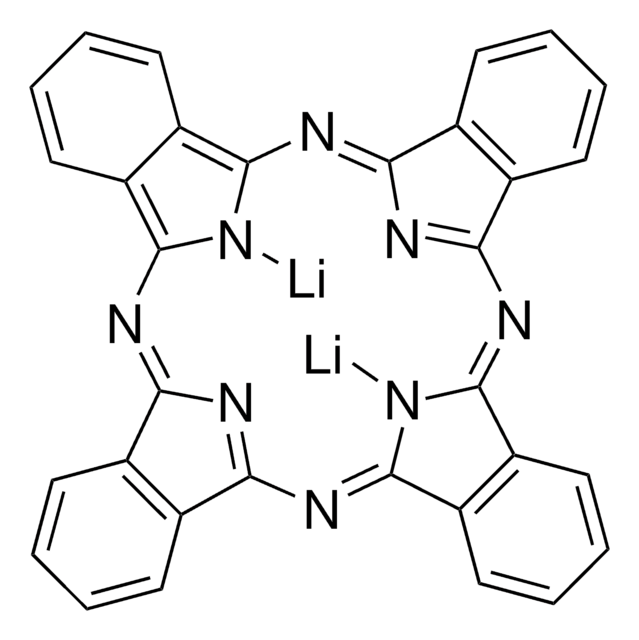931985
Phthalocyanine
Sinonimo/i:
Dehydrophthalocyanine, H2Pc, Pigment Blue 16
About This Item
Prodotti consigliati
Descrizione
PL: 418 nm
μh ≈ 4.0 x 10−5 cm2 V−1 s−1
Livello qualitativo
Punto di fusione
>300 °C (dec.)
Temp. transizione
Tg >350 °C ((0.5% weight loss))
Solubilità
DMF: soluble
Energia dell’orbitale
HOMO 5.35 eV
LUMO 3.35 eV
Assorbanza UV
λ: 279 nm Amax
λ: 693 nm Amax
Stringa SMILE
c1ccc2c3nc(nc4[nH]c(nc5nc(nc6[nH]c(n3)c7ccccc67)c8ccccc58)c9ccccc49)c2c1
Cerchi prodotti simili? Visita Guida al confronto tra prodotti
Applicazioni
In the field of organic electronics, H2Pc has been explored as a popular Hole Injection Layer (HIL) material for organic light-emitting diode devices (OLEDs).This special compound has also been explored for solar cells application given its robust and intensely colored macrocycles (blue pigments) with high chem., thermal and light stability, properties that are of paramount importance for realistic photovoltaic applications. H2Pc have attracted special attention as photosensitizers for dye-sensitized solar cells (DSSCs).
In biomedicine, phthalocyanine can serve as selective fluorescent probes for bioanal. and bioimaging, and as efficient photosensitizers for photodynamic therapy of cancer and other non-cancerous conditions.
Prodotti correlati
Codice della classe di stoccaggio
11 - Combustible Solids
Classe di pericolosità dell'acqua (WGK)
WGK 1
Punto d’infiammabilità (°F)
Not applicable
Punto d’infiammabilità (°C)
Not applicable
Certificati d'analisi (COA)
Cerca il Certificati d'analisi (COA) digitando il numero di lotto/batch corrispondente. I numeri di lotto o di batch sono stampati sull'etichetta dei prodotti dopo la parola ‘Lotto’ o ‘Batch’.
Possiedi già questo prodotto?
I documenti relativi ai prodotti acquistati recentemente sono disponibili nell’Archivio dei documenti.
Il team dei nostri ricercatori vanta grande esperienza in tutte le aree della ricerca quali Life Science, scienza dei materiali, sintesi chimica, cromatografia, discipline analitiche, ecc..
Contatta l'Assistenza Tecnica.





